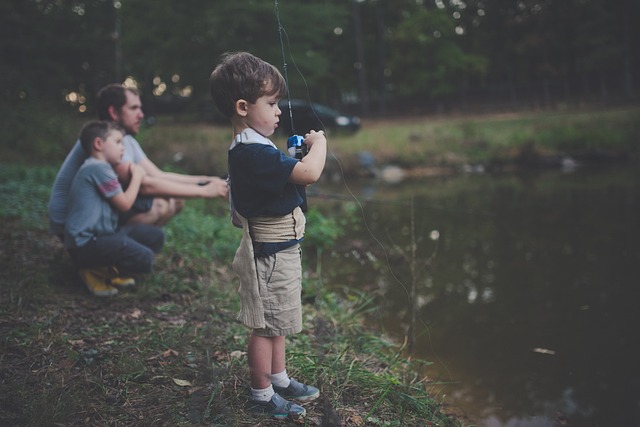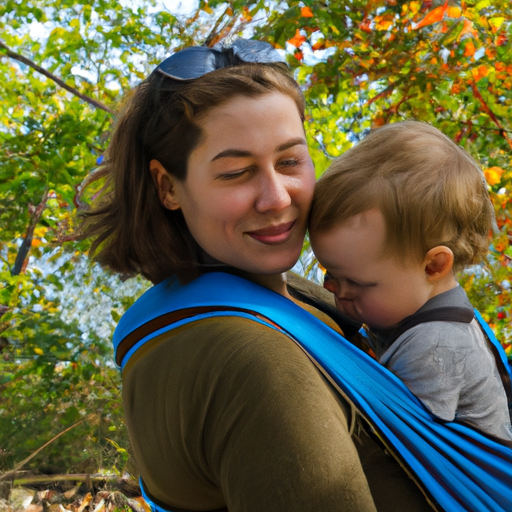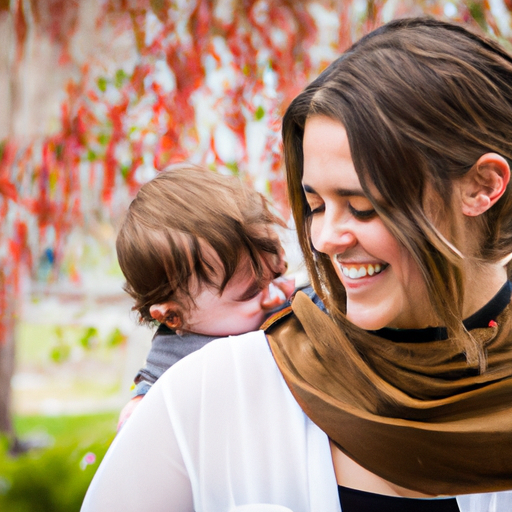In this article, we will explore the fascinating science behind babywearing for bonding. You will learn how this practice can strengthen the bond between a parent and child, and the benefits it offers for both. We will delve into the research that highlights the positive effects of babywearing on infant development, parent-infant attachment, and even the parent’s well-being. By the end, you will have a deeper understanding of the science behind babywearing and why it is a wonderful practice for fostering a strong connection with your little one.

Introduction
Babywearing is a practice that has been embraced by parents all over the world for centuries. It involves using a special carrier to keep your baby close to your body while you go about your daily activities. Not only does babywearing make it easier for parents to multitask, but it also provides numerous benefits for both the baby and the parent.
What is Babywearing?
Babywearing simply refers to the practice of carrying your baby in a carrier that is worn on your body. This can be in the form of a sling, wrap, or structured carrier. The carrier is designed to hold your baby securely against your chest, allowing you to keep your hands free while still providing a nurturing environment for your little one.

The Benefits of Babywearing
Physical Benefits
One of the most obvious benefits of babywearing is the physical closeness it promotes between parent and baby. This closeness has been shown to have a positive impact on a baby’s physical development. Babies who are frequently carried often exhibit better head control and motor skills, as the movement stimulates their vestibular system.
Emotional Benefits
Babywearing also has numerous emotional benefits for both the baby and the parent. The close physical contact promotes feelings of security and comfort for the baby, which can help reduce crying and fussiness. For the parent, babywearing enhances the bonding experience and allows for better emotional regulation, reducing the risk of postpartum depression and anxiety.
Cognitive Benefits
Furthermore, babywearing has been linked to improved cognitive development in infants. Studies have shown that babies who are carried regularly tend to have higher levels of alertness and engagement with their surroundings. The constant exposure to the parent’s movements, facial expressions, and speech stimulates their senses and promotes cognitive growth.
How Babywearing Promotes Bonding
The practice of babywearing promotes bonding between parent and child in several ways. Firstly, the physical closeness encourages the release of hormones such as oxytocin, which is often referred to as the “love hormone.” Oxytocin is known to strengthen the bond between parent and child, promoting feelings of love, trust, and connection.
Additionally, babywearing facilitates skin-to-skin contact, which is vital for bonding. Skin-to-skin contact releases hormones that help regulate the baby’s body temperature, heart rate, and breathing. It also promotes the colonization of the baby’s skin with beneficial bacteria, which boosts their immune system.
Moreover, babywearing helps regulate the baby’s stress response. The constant contact with the parent’s body and the gentle movement recreates the soothing environment of the womb, reducing the baby’s stress levels and promoting a sense of safety and security. This regulation of the stress response is crucial for the baby’s emotional well-being and overall development.
Lastly, babywearing enhances parent-child communication. The close proximity allows for increased eye contact, facial expressions, and vocal interactions between parent and baby. This constant communication helps the baby learn language, develop social skills, and build a strong emotional foundation.

The Science Behind Bonding
Release of Oxytocin
The release of oxytocin plays a significant role in bonding between parent and child. Oxytocin is a hormone that is released during skin-to-skin contact, breastfeeding, and physical touch. It promotes feelings of love, trust, and attachment, creating a strong bond between parent and baby.
Skin-to-Skin Contact
Skin-to-skin contact is an essential component of bonding. When the baby is placed on the parent’s bare chest, it triggers the release of hormones that regulate the baby’s body temperature, heart rate, and breathing. It also promotes the colonization of the baby’s skin with beneficial bacteria, strengthening their immune system.
Regulation of Baby’s Stress Response
Babywearing helps regulate the baby’s stress response by recreating the soothing environment of the womb. The constant contact with the parent’s body and the gentle movements mimic the sensations the baby experienced in utero. This regulation of the stress response is crucial for the baby’s emotional well-being and overall development.
Enhanced Parent-Child Communication
With the baby being carried close to the parent’s body, there is increased eye contact, facial expressions, and vocal interactions, all of which contribute to enhanced parent-child communication. This constant communication helps the baby develop language, social skills, and a strong emotional foundation.
Choosing the Right Baby Carrier
Ergonomics and Safety
When choosing a baby carrier, it is essential to prioritize ergonomics and safety. Look for carriers that provide proper support for the baby’s head, neck, and spine. The carrier should distribute the baby’s weight evenly across the parent’s body to avoid strain or discomfort. Additionally, ensure that the carrier is made from breathable, durable materials.
Types of Baby Carriers
There are various types of baby carriers available, including slings, wraps, and structured carriers. Slings are worn over one shoulder and are suitable for newborns and infants. Wraps consist of a long piece of fabric that is wrapped around the parent and the baby, providing customized support. Structured carriers have a more rigid structure and typically offer multiple carrying positions.
Factors to Consider
When choosing a baby carrier, consider factors such as ease of use, adjustability, and versatility. It is important to select a carrier that fits both the parent and the baby comfortably and allows for easy adjustments as the baby grows. Additionally, consider the specific needs of you and your baby, such as any existing health conditions or physical limitations.

Getting Started with Babywearing
Learning Proper Babywearing Techniques
To ensure a safe and comfortable experience, it is crucial to learn proper babywearing techniques. Familiarize yourself with the instructions provided by the carrier manufacturer and practice wearing the carrier without the baby first. Seek guidance from certified babywearing educators or attend babywearing workshops to learn the correct techniques.
Ensuring Comfort for Both Parent and Baby
To ensure comfort for both the parent and the baby, make sure the carrier is adjusted properly. The baby’s airway should never be obstructed, and their chin should be off their chest. Check that the carrier is snug but not too tight, and distribute the baby’s weight evenly across your body. Regularly monitor your baby for signs of discomfort, such as redness or fussiness, and adjust the carrier as needed.
Babywearing Tips and Troubleshooting
Proper Positioning and Support
When babywearing, ensure that the baby is in an upright position with their face visible and their airway clear. Their knees should be higher than their bottom to support their hip development. Use any provided inserts or accessories for newborns to ensure proper positioning and support. Regularly check the baby’s position and readjust if necessary.
Dealing with Discomfort
If you experience discomfort while babywearing, it may be due to improper positioning or an ill-fitting carrier. Take the time to readjust the carrier and ensure that it is snug but not too tight. If discomfort persists, consider trying a different type or brand of carrier that better suits your body shape and size.
Overcoming Challenges
Like any new skill, babywearing can have a learning curve. It is common to face challenges such as difficulty with tying a wrap or finding the right fit with a structured carrier. Practice is key, and seeking guidance from babywearing educators or online communities can help overcome these challenges. Remember to be patient with yourself and your baby as you both learn and adapt to the babywearing experience.

Exploring Different Babywearing Styles
Front Carrying
Front carrying is the most common babywearing style, where the baby is carried in a carrier against the parent’s chest. This style allows for easy bonding and interaction between parent and baby. It is suitable for newborns and young infants.
Back Carrying
Back carrying involves carrying the baby on the parent’s back using a structured carrier or a wrap. This style is suitable for older babies who have good head and neck control. Back carrying allows the parent to have their hands free while still providing a nurturing environment for the baby.
Hip Carrying
Hip carrying is a versatile style that allows the baby to be carried on the parent’s hip using a ring sling or a structured carrier. This style is ideal for toddlers who want to explore their surroundings while still maintaining closeness with the parent.
Conclusion
Babywearing is not just a practical way to transport your baby, but it also has numerous benefits for both the baby and the parent. The close physical contact promotes bonding and emotional well-being, while the constant communication enhances cognitive development. Understanding the science behind bonding and choosing the right carrier can help you maximize the benefits of babywearing. So, embrace the practice of babywearing and enjoy the incredible bond it fosters between you and your baby.





